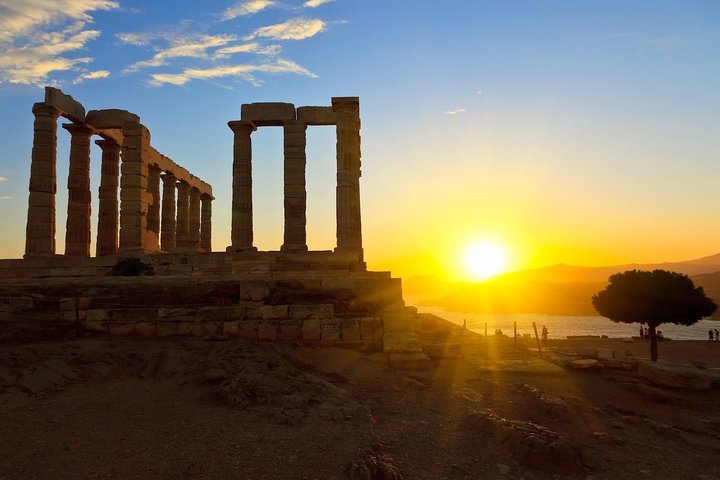Cape Sounion: A Timeless Odyssey to the Temple of Poseidon
Drawn by the allure of ancient history, I embarked on a journey to Cape Sounion, eager to explore the Temple of Poseidon and the breathtaking views of the Aegean Sea. Join me as I recount this unforgettable experience.
A Journey Through Time: The Scenic Drive to Cape Sounion
As a former professor of European history, I have always been drawn to the ancient sites that whisper stories of the past. My recent journey to Cape Sounion was no exception. The trip began with a private pick-up from our hotel in Athens, where my wife and I were greeted by our driver, George. His warm demeanor and wealth of knowledge set the tone for what would be an unforgettable experience.
The drive along the Saronic Gulf was nothing short of spectacular. The azure waters of the Aegean Sea glistened under the sun, and the coastal landscape unfolded like a living tapestry. George regaled us with tales of the region’s history, from the ancient mariners who once navigated these waters to the strategic importance of Cape Sounion in antiquity. His stories were punctuated by stops at scenic viewpoints, where we captured the beauty of the coastline through our camera lenses.
As we approached the cape, the Temple of Poseidon came into view, its white columns standing proudly against the backdrop of the sea. It was a sight that stirred the historian in me, evoking images of ancient rituals and the reverence of the sea god Poseidon.
The Majestic Temple of Poseidon
Upon arrival at the Temple of Poseidon, I was immediately struck by the serenity of the site. Unlike the bustling Acropolis, the temple was a haven of tranquility, allowing us to explore its ancient ruins without the throngs of tourists. The temple, built between 444 and 440 BC, is a testament to the architectural prowess of the ancient Greeks. Its Doric columns, though weathered by time, still exude a sense of majesty and grace.
As I wandered through the ruins, I couldn’t help but reflect on the temple’s significance as a beacon for ancient sailors. The view from the promontory was breathtaking, offering sweeping vistas of the Aegean Sea. It was easy to see why this location was chosen for a temple dedicated to the god of the sea.
One of the highlights of our visit was discovering the signature of Lord Byron, etched into one of the columns. This small act of defiance by the Romantic poet added a layer of intrigue to the site, connecting the ancient world with the literary movements of the 19th century.
A Culinary Delight by the Sea
After our exploration of the temple, George whisked us away to a nearby seaside restaurant. The setting was idyllic, with our table positioned right on the shore, offering a view of the temple illuminated against the evening sky. The silhouette of sailboats on the horizon added to the enchanting atmosphere.
The meal was a culinary delight, featuring local specialties such as Sea bream and Calamari. My wife, who typically avoids seafood, was pleasantly surprised by the flavors and even ventured to try the fish. It was a testament to the quality of the cuisine that she found it to her liking.
As we dined, the sun dipped below the horizon, casting a golden glow over the sea. It was a moment of pure magic, one that will remain etched in our memories. After dinner, George treated us to a visit to a bustling gelato shop, where we indulged in the creamy delights of Italian ice cream.
The drive back to our hotel was a time for reflection, as we recounted the day’s experiences and the special memories we had made. The trip to Cape Sounion was more than just a visit to an ancient site; it was a journey through time, a celebration of history, and a testament to the enduring allure of Greece’s cultural heritage. For those who seek to explore the depths of history while indulging in the pleasures of the present, I wholeheartedly recommend this adventure.



















































